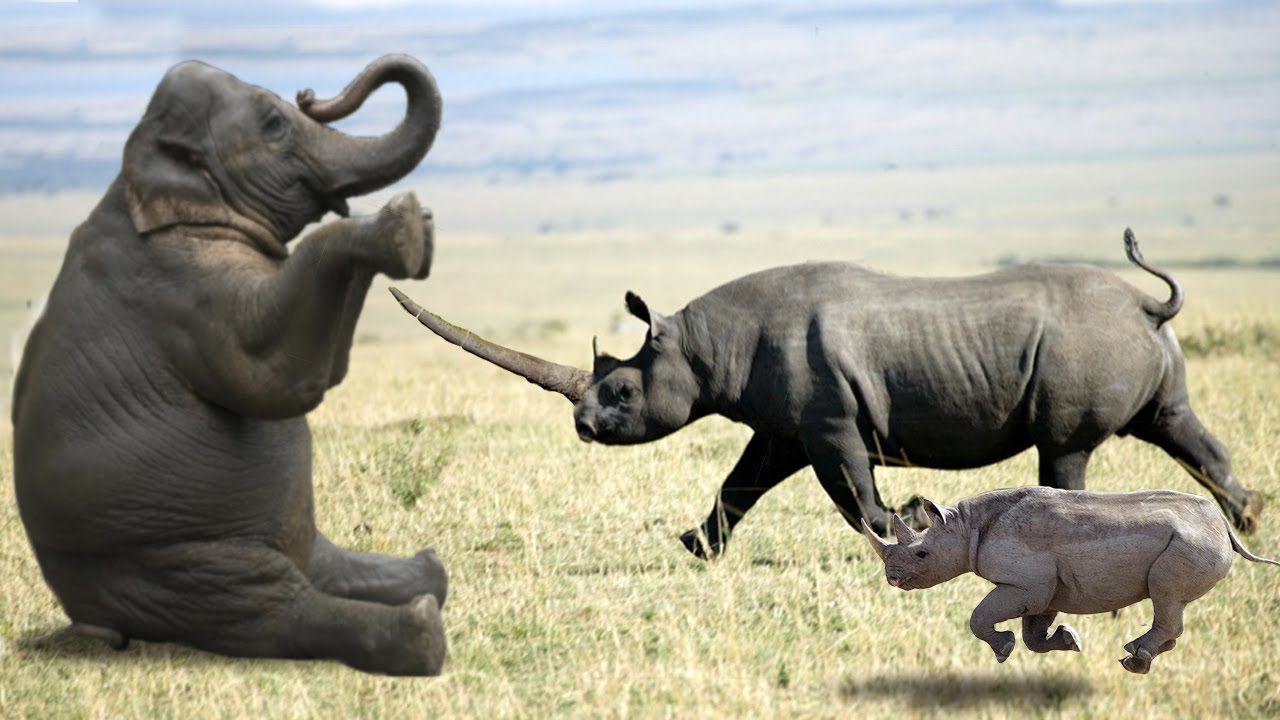The article compares and contrasts two of Africa’s largest mammals, elephants and rhinos, discussing their size, body shape, diet, social behavior, and conservation status. While both mammals are herbivores, their diets differ, with elephants primarily grazing and rhinos feeding on tough grasses and woody plants. Further, elephants are highly social and often travel in herds, in contrast to rhinos which are solitary creatures. Sadly, both animals face threats from poaching and habitat loss. Conservation efforts, including anti-poaching patrols and protected areas, are working to protect these majestic animals and ensure their survival in the wild.
Elephant vs. Rhino: Battle of the African Giants
Introduction
The African continent is home to some of the largest and most impressive animals on earth. Two of Africa’s giants, the elephant and the rhino, are impressive battles of strength and grace. The two animals are similar in some ways, but differ vastly due to their unique adaptations and habitats.
Comparing Size and Weight
Both the elephant and rhino are large animals, but the elephant is the largest land mammal in the world. An adult male elephant can weigh up to six tons (12,000 pounds) while an adult male rhino typically weighs around 2,500-3,000 pounds. Elephants are also taller than rhinos, standing at 10-13 feet tall while rhinos stand around 5-6 feet tall.
Different Body Shapes and Adaptations
Rhinos have a more compact body shape than elephants. They are able to run up to 30mph and can change direction quickly due to their flexible ankles. Their skin is thick and wrinkly, serving as protection from predators and the harsh African sun. Elephants, on the other hand, have a smoother and more elongated body shape. They have a trunk that they use for feeding and drinking water, while rhinos use their mouths to grasp and pull plants.
Feeding Habits and Diet
Both the elephant and rhino are herbivores, but their diets differ. Elephants are primarily grazers, using their trunks to pick grass and leaves off trees. They consume between 200-600 pounds of vegetation a day. In contrast, rhinos primarily feed on tough grasses and woody plants. They use their lips to pluck leaves and stems and tear them from the ground.
Social Behavior and Communication
Elephants and rhinos both have complex social lives, but they interact with one another in different ways. Elephants are highly social animals that often travel in herds. They are known to have tight-knit family units and communicate with one another via touch, sound, and visual cues. Rhinos, on the other hand, are solitary creatures that usually only seek out other rhinos for mating purposes. They communicate with one another using a variety of vocalizations and sense marking.
Threats and Conservation
Both elephants and rhinos face many threats in their natural habitats, including poaching and habitat loss. Elephants are killed for their ivory tusks, while rhinos are killed for their horns, which are highly valued in traditional medicine and as a status symbol. Conservation efforts have been put in place to protect these majestic animals, including anti-poaching patrols and the creation of protected areas.
Conclusion
While elephants and rhinos are both African giants, they differ in many ways, including their size, body shape, feeding habits, social behavior, and conservation status. Understanding the unique adaptations and behaviors of these animals is important in ensuring their survival in the wild.
